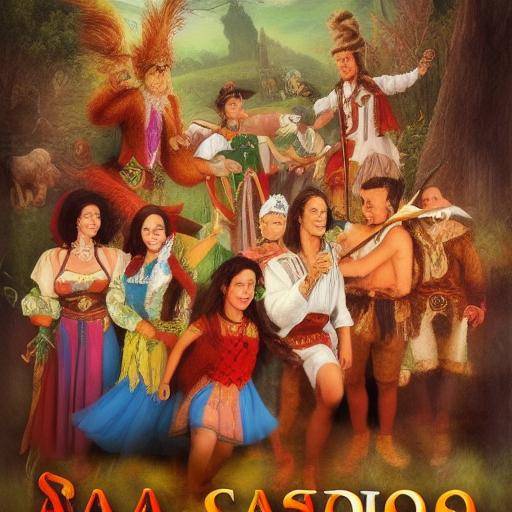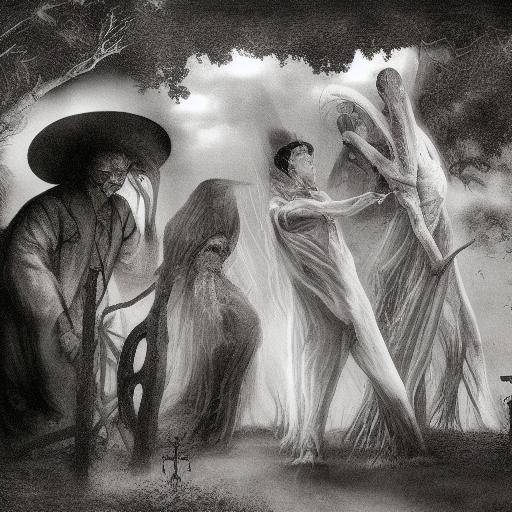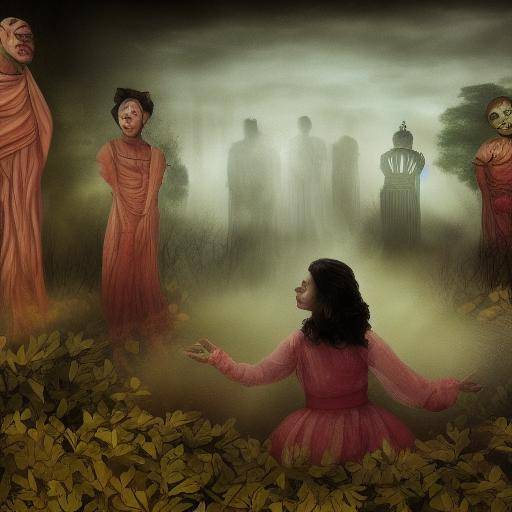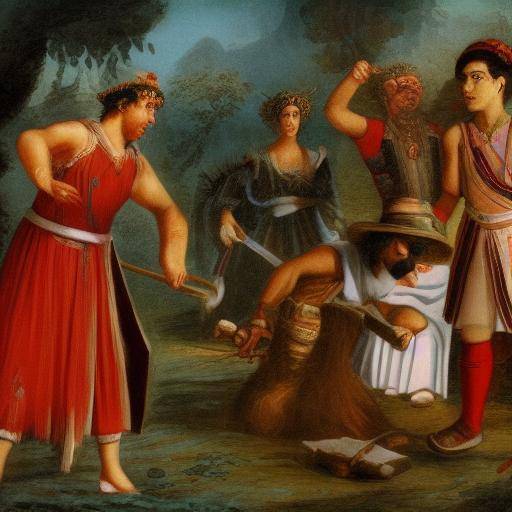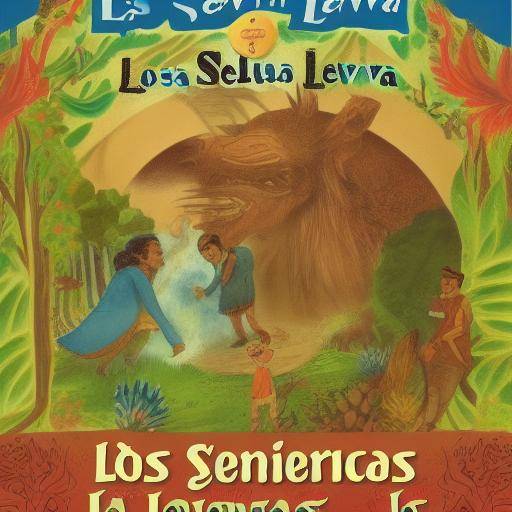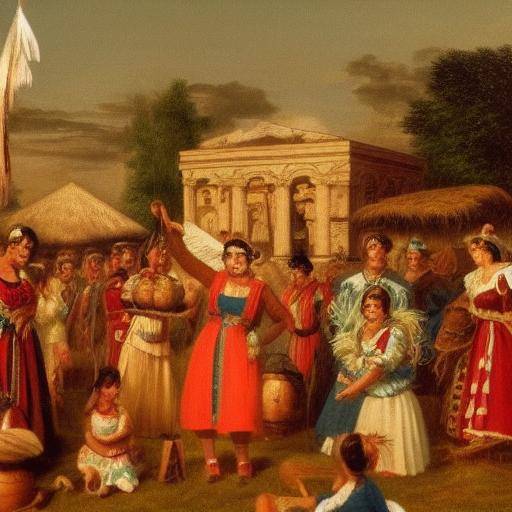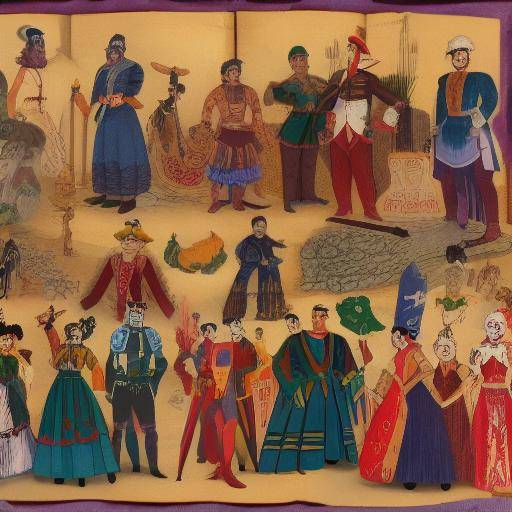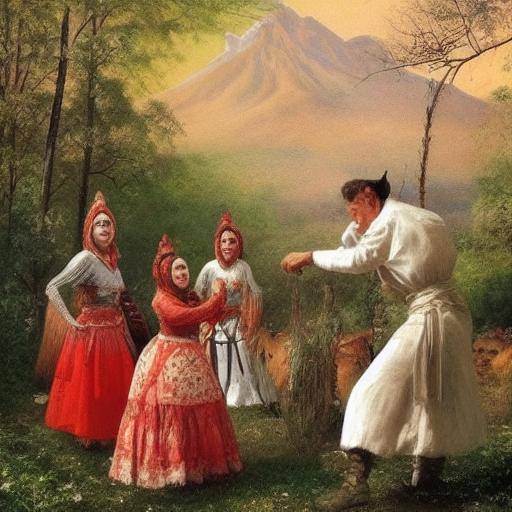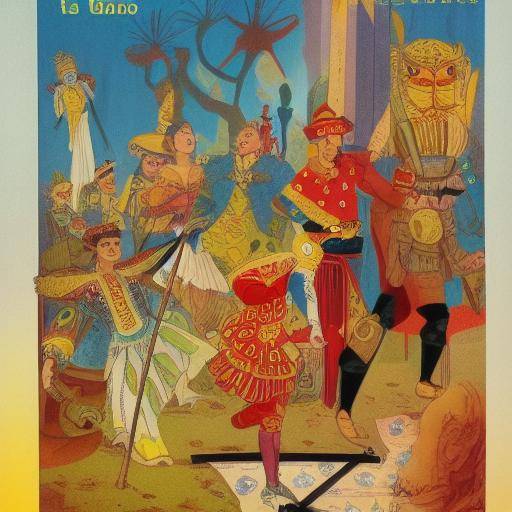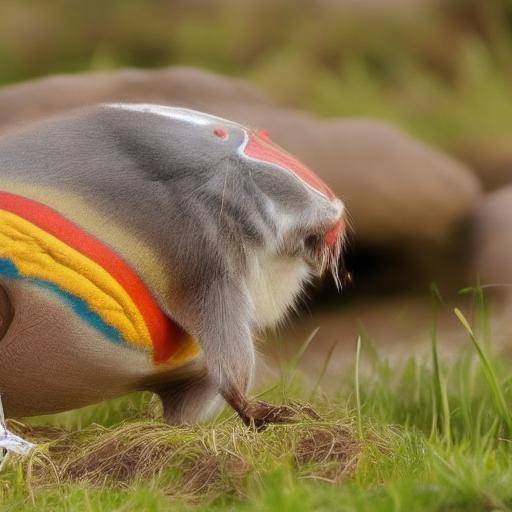
The fascination with the myths of nature has been a constant throughout the history of humanity. In particular, Asian legends have transmitted wonderful stories that have endured over the centuries, offering a unique vision of the relationship between human beings and the natural environment. In this article, we will explore in detail the myths of nature present in Asian legends, immersed in mystical stories, ancestral lessons and the magic of nature.
Introduction
Asian legends have been transmitted from generation to generation, enriching the culture of different peoples and providing a rich source of ancestral wisdom. In these stories, nature comes to life, becoming a more character, full of symbolism and teaching. Throughout this article, you will discover the beauty and depth of these myths, as well as their relevance today.
History and Background
To fully understand the richness of the myths of nature in Asian legends, it is essential to get into their history and background. These stories, rooted in ancient civilizations, have influenced the beliefs, traditions and worldview of many Asian cultures. From ancient China to feudal Japan, each region has developed its own narratives that reflect its relationship with the natural environment.
Antiquity and Origen
The origin of the myths of nature in Asia dates back to time immemorial. In ancient China, for example, taoism and confucianism have influenced the conceptualization of nature as a living and spiritual entity. Chinese legends, like the history of the dragon that controls the waters, show how nature was perceived as a sacred entity, with a power that should be respected and feared.
In Japan, shintoism has played a fundamental role in the relationship between nature and deities. The kami, sacred spirits that dwell in nature, are venerated and respected, and this devotion is reflected in the legends that exalt the beauty and strength of the natural elements.
Evolution and Transmission
Over time, these stories have been transmitted from generation to generation, adapting to sociocultural changes and acquiring new interpretations. It is in this continuous evolution where the lasting relevance of the myths of nature lies in the Asian legends. Through festivals, theatrical performances and rituals, these stories continue to captivate contemporary audiences, keeping alive the connection between humans and nature.
Anecdotes and Examples
An outstanding example of the influence of the myths of nature in Asian legends is the story of "Amaterasu, the goddess of the sun" in Japan. This ancient legend tells how the goddess, disappointed by the actions of her brother Susanoo, retires to a cave, plunging the world into darkness. The other gods manage to convince her to return, and in doing so, her light restores life on earth. This narrative symbolizes the restorative and vital power of nature, as well as the importance of harmony between divine beings and the natural environment.
Deep analysis
The myths of nature in Asian legends not only offer mere entertainment, but also provide deep insights into the relationship between humanity and the natural world. Its detailed analysis reveals the teachings that have endured over the centuries, providing a valuable understanding of ethical principles, human interactions and spiritual connection with nature.
Teachings and Simbolismos
Asian legends are full of teachings about laharmony, balance and respect for nature. Through mythical characters, supernatural elements and natural phenomena, these stories convey lessons on the importance of preserving the environment, honoring the spirits of nature and living in harmony with the universe. In addition, the symbolisms present in these legends provide a rich source of metaphors and allegories that invite reflection on the human condition and its relation to the natural environment.
Reflection and Deep Meanings
By immersed in the myths of nature in Asian legends, a world of profound meanings is revealed that transcend the purely narrative. These stories offer opportunities to explore existential issues, universal emotions and ethical dilemmas through metaphors and symbolic narratives. Nature becomes a mirror that reflects the concerns and longings of humanity, allowing an enriching reflection on our place in the world and our responsibility towards the natural environment.
Comprehensive review
The full understanding of the myths of nature in Asian legends requires an integral examination that encompasses its practical applications, its cultural context and its influence in contemporary society. This thorough exploration allows us to appreciate the lasting relevance of these stories in a modern world, where the connection with nature and the preservation of the environment are issues of growing importance.
Traditional applications and practices
The influence of nature myths in Asia is not limited only to traditional narratives. These stories have inspired ceremonial practices, festivals and rituals that seek to maintain harmony with nature, invoke the blessing of natural spirits and honor natural cycles. These traditions rooted in legends provide a solid basis for the preservation of cultural practices and the promotion of environmental sustainability.
Contemporary Perspectives and Challenges
In the modern era, the relevance of the myths of nature in Asian legends is manifested in the environmental challenges facing the world. These stories offer unique perspectives on human interaction with the natural environment and raise questions about collective responsibility for the conservation and protection of the planet. In a context of climate change and biodiversity loss, the ancestral lessons present in these myths acquire unprecedented relevance, inviting reflection on our actions and their impacts on nature.
Comparative analysis
By comparing the myths of nature in Asian legends with other traditions and narratives of the whole world, they reveal both similarities and significant differences that enrich our understanding of the relationship between humanity and nature in different cultures.
Parallelisms and Divergences
Asian legends share points in common with those of other cultures in their representation of nature as a powerful and sacred entity, subscribed to devotion and respect by human beings. However, the particular forms in which the myths of nature are manifested in Asian legends, as well as the specific symbols and narratives, offer a unique cultural wealth that enriches the diversity of perspectives on the relationship between the human being and the natural environment.
Synergies and Complementarities
In exploring the similarities and divergences between the myths of nature in Asian legends and other traditions, spaces for intercultural dialogue and mutual enrichment are opened. The convergence of shared values, such as respect for the nature and veneration of natural elements, offers opportunities for collaboration and intercultural understanding that transcend geographical boundaries and linguistic barriers.
Concrete Tips and Actions
The contemporary relevance of the myths of nature in Asian legends is manifested in the search for concrete actions that promote environmental conservation and the promotion of ethical values related to harmony with nature. It is vital that the lessons contained in these stories become tangible actions, such as the adoption of sustainable practices, support for conservation initiatives and the promotion of environmental education. These are concrete steps that can be inspired by the deep legacy of the myths of nature in Asian legends, contributing to a more balanced and respectful world with the natural environment.
Industry Perspectives and Expert Reviews
The impact of the myths of nature on Asian legends goes beyond the cultural sphere, influencing the perspective of experts and leaders in different disciplines, from environmental conservation to anthropology and comparative literature.
Reflections and Projections
Experts in various areas have provided deep analysis of the role of nature myths in Asian legends in the configuration of collective consciousness and the promotion of fundamental values. Their reflections, based on the understanding of history, comparative mythology and cultural studies, offer valuable insights on the relevance of these myths in a globalized context, as well as projections on their future influence in the search for sustainable solutions for environmental challenges.
Interviews and Highlights
Through interviews with academics, writers and activists committed to the preservation of the environment, it is possible to explore outstanding opinions that highlight the importance of preserving and spreading the myths of nature in Asian legends. These opinions offer an integral view of the contemporary relevance of these stories and their potential to foster a positive change in the relationship between humanity and nature.
Case Studies and Practical Applications
To fully understand the impact of nature myths on Asian legends, it is crucial to examine case studies that show practical applications of these stories in contemporary contexts. These concrete examples illustrate how the principles and teachings contained in nature myths can be implemented, inspiring meaningful and transformative actions.
Exemplar and Lessons Learned
The application of nature myths in Asian legends has led to innovative initiatives in the field of education, sustainable tourism and environmental management. These exemplary cases offer lessons on how ancestral narratives can be powerful instruments to motivate the preservation of the environment and foster greater spiritual connection with nature. They also reveal the positive impact these initiatives have on local communities, promoting cultural pride and ecological awareness.
Future Trends and Predictions
As the world faces increasingly pressing challenges in relation to the environment, it is crucial to analyse future trends related to nature myths in Asian legends. This exploration gives us the opportunity to anticipate how these millennial stories will continue to shape global consciousness and promote fundamental values in the coming decades.
Emerging Perspectives and Challenges
Emerging trends related to the myths of nature in Asian legends point to greater integration of these stories into popular culture, artistic creation and environmental awareness strategies. However, there are also challenges, such as the preservation of cultural authenticity, intergenerational transmission and adaptation of these stories to a constantly evolving contemporary context.
Future Predictions and Scenarios
Based on current trends and projections of experts, it is possible to elaborate future scenarios that address the transformative role of nature myths in Asian legends in the formation of a global consciousness aimed at the preservation of the environment and respect for nature. These predictions offer a hopeful vision of how these timeless stories will continue to nurture human imagination and guide our efforts towards a more sustainable future.
Conclusion
The myths of nature in Asian legends represent an invaluable legacy that transcends time and space, offering universal teachings on the relationship between humanity and the natural environment. Its contemporary relevance is manifested in its influence on culture, environmental awareness and the promotion of fundamental ethical values. In exploring these stories, we immerse ourselves in a world of ancestral wisdom that nourishes the human spirit and inspires us to preserve the beauty and vitality of nature.
Frequently asked questions
1. What is the importance of the myths of nature in Asian legends?
The myths of nature in Asian legends are of great importance, as they offer profound teachings on harmony with nature, the preservation of the environment and the spiritual connection with the universe. These stories have endured over the centuries, transmitting fundamental values that remain relevant today.
2. How have the myths of nature influenced Asian legends in contemporary culture?
The myths of nature in Asian legends have influenced contemporary culture through its presence in literature, art, environmental education and ceremonial practices. These stories continue to inspire concrete actions to promote the preservation of the environment and the spiritual connection with nature.
3. What lessons can be learned from the myths of nature in Asian legends?
The lessons of the myths of nature in Asian legends include values such as respect for nature, the importance of harmony with the natural environment and reverence for natural elements. These lessons provide an invaluable guide to promote sustainability and environmental awareness.
4. How can we apply the teachings of nature myths in Asian legends in everyday life?
The teachings of nature myths in Asian legends can be applied in everyday life by adopting sustainable practices, promoting respect for nature and promoting environmental education. These concrete actions reflect the values transmitted by these stories and contribute to a greater balance with the natural environment.
5. What is the lasting legacy of the myths of nature in Asian legends?
The lasting legacy of the myths of nature in Asian legends lies in its ability to inspire imagination, promote fundamental ethical values and foster greater spiritual connection with nature. These stories continue to nourish the human spirit and offer guidance in the search for a more sustainable and harmonious world.
6. How can we spread and preserve the myths of nature in Asian legends?
The dissemination and preservation of the myths of nature in Asian legends can be achieved through education, cultural outreach, support for traditional ceremonial practices and the promotion of art and literature inspired by these stories. In addition, it is essential to respect the cultural authenticity of these narratives and encourage their intergenerational transmission.
With this extensive exploration of the myths of nature in Asian legends, we have unraveled the deep richness of these ancestral stories, their impact on the contemporary world and their transformative potential in the future. Through its universal teachings, its narrative beauty and its connection to the very essence of nature, these Asian legends continue to inspire present and future generations, reminding us of the importance of preserving and honoring the natural world around us. That this exploration motivates us to reflect on our relationship with nature and to undertake concrete actions to promote a more harmonious and sustainable world.







